For inspiration and ready-to-use templates, check out our Assistant Templates collection.
Getting Started
1
Access the Assistant Builder
Navigate to the assistant overview page and click “Create assistant”.This opens the assistant configurator with configuration options on the left and a testing panel on the right.
2
Plan Your Assistant
Before diving into configuration, consider these key questions:
For our job description assistant, we want to:Help users write job descriptions for different platforms and target groups
Guide users through providing job details
Ask for missing information when needed
Never assume information that wasn’t provided
Planning Questions
Planning Questions
- Purpose: What specific task should this assistant help with?
- Process: What are the steps to achieve this task?
- Resources: Do you need to attach files or connect to knowledge sources?
- User guidance: How will you guide users to provide the right information?
- Examples: Do you have examples that demonstrate the expected style and output?
Basic Configuration
Icon, Name, and Description

1
Upload an Icon
Choose an emoji or upload a custom icon that represents your assistant’s purpose.
2
Set Name and Description
- Name:
Onboarding Assistant - Description:
Helps new team members to get started in the company by answering frequently asked questions.
Writing Instructions

Automatic Saving: Your assistant saves automatically as you make changes, no manual saving required.
1
Persona
Define who your assistant is:
2
Tasks
Specify what the assistant should do and how:
3
Context
Provide relevant background information:
4
Format
Specify the expected output structure:
Advanced Configuration
Conversation Starters
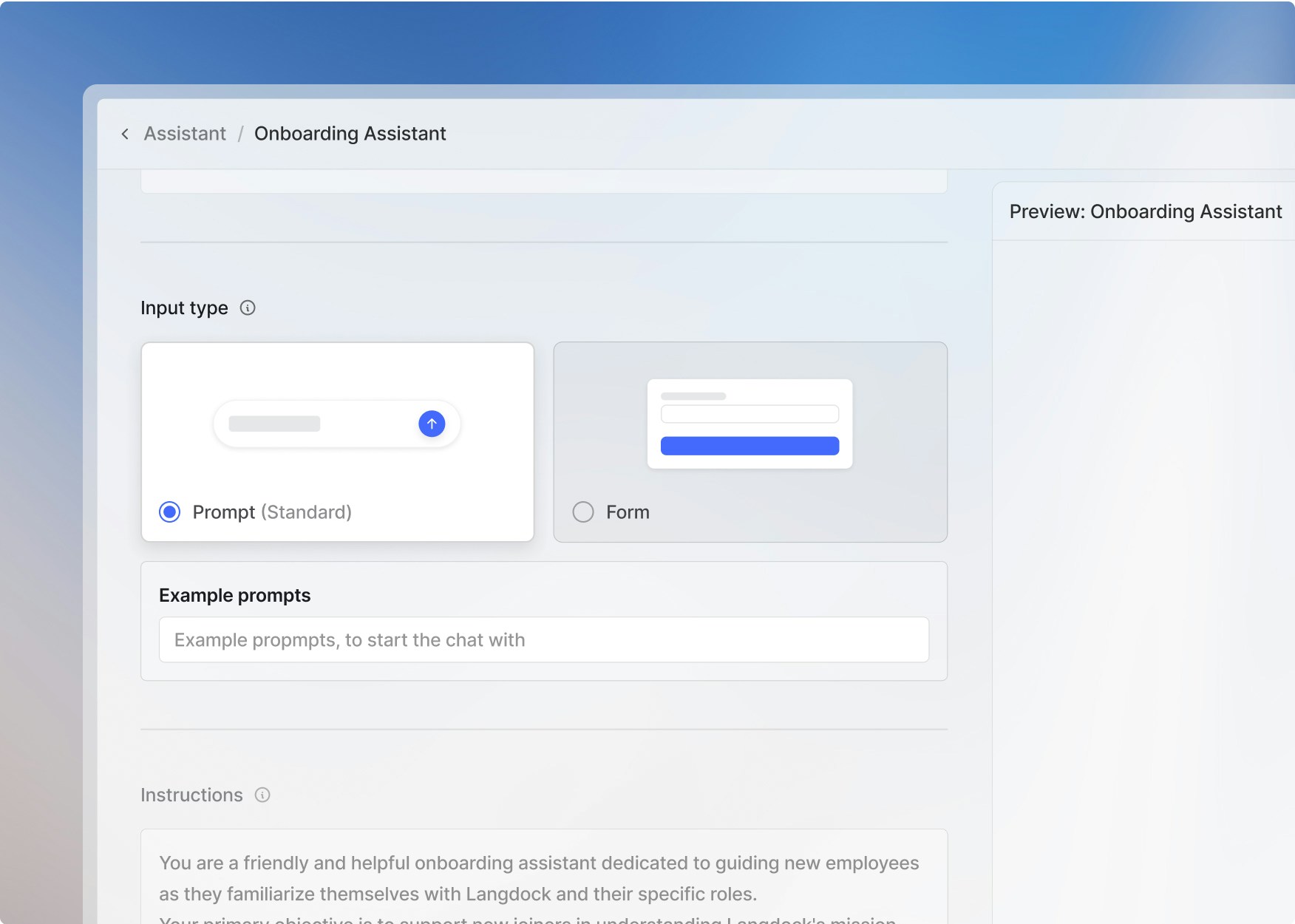
When to Use Conversation Starters
When to Use Conversation Starters
Multiple Tasks
Multiple Tasks
If your assistant can perform different tasks, let users choose:
- I want to write a new text
- I want to correct a text I have written
Common Prompts
Common Prompts
For frequently asked questions or common use cases:
- How do I request holidays?
- Who do I contact for tech support questions?
Testing
Testing
Use conversation starters to quickly test your assistant during development instead of retyping the same prompts.
Knowledge Integration
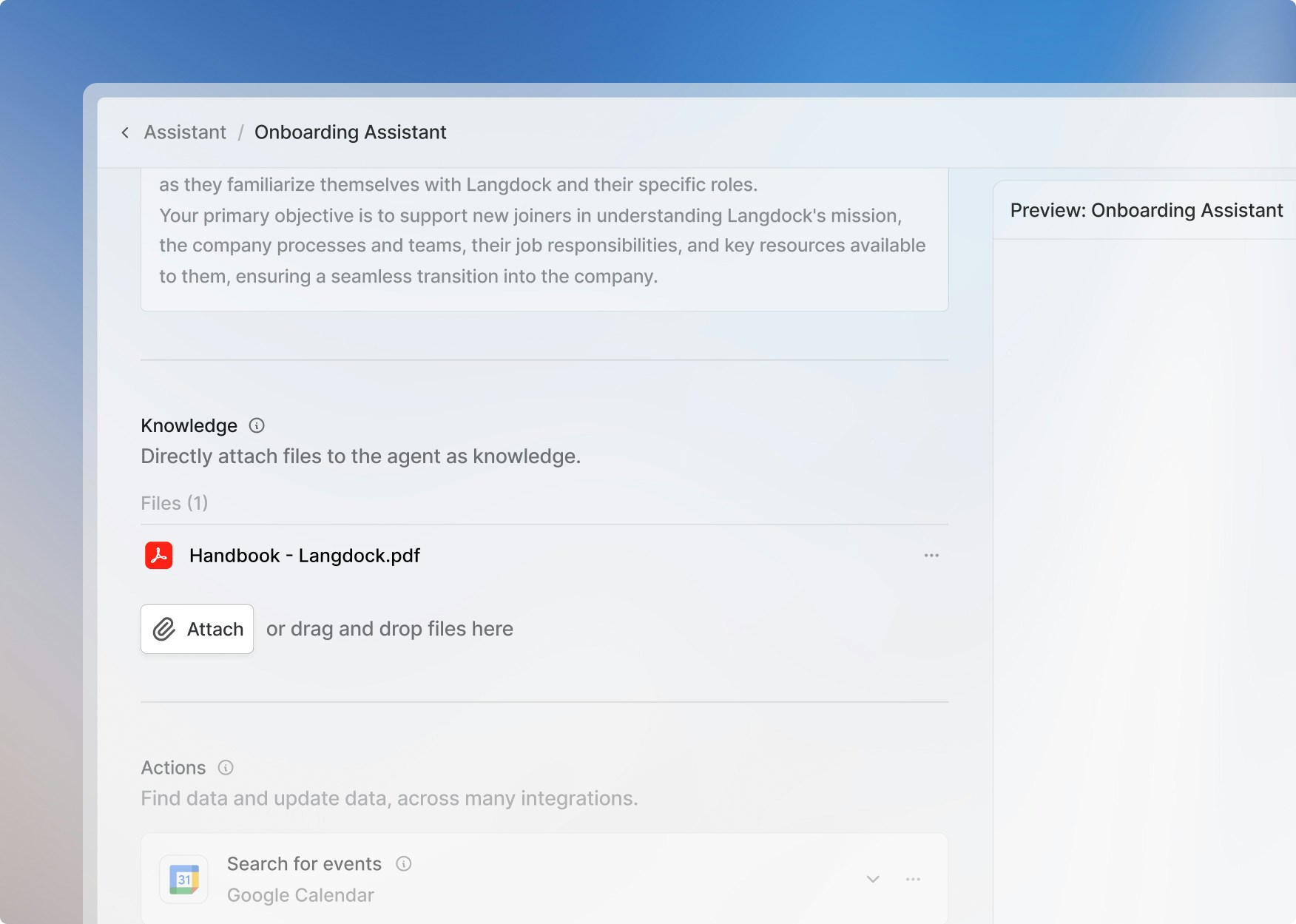
Capabilities
Enable additional tools your assistant can use:Web Search
Access real-time information from the internet
Data Analysis
Analyze data and create visualizations
Image Generation
Create images based on text descriptions
Canvas
Dedicated editing screen alongside your chat
By default, assistants are created without any capabilities enabled. When building an assistant that needs web search (or any other tool), make sure to manually add those capabilities in the assistant settings.
Assistant Actions
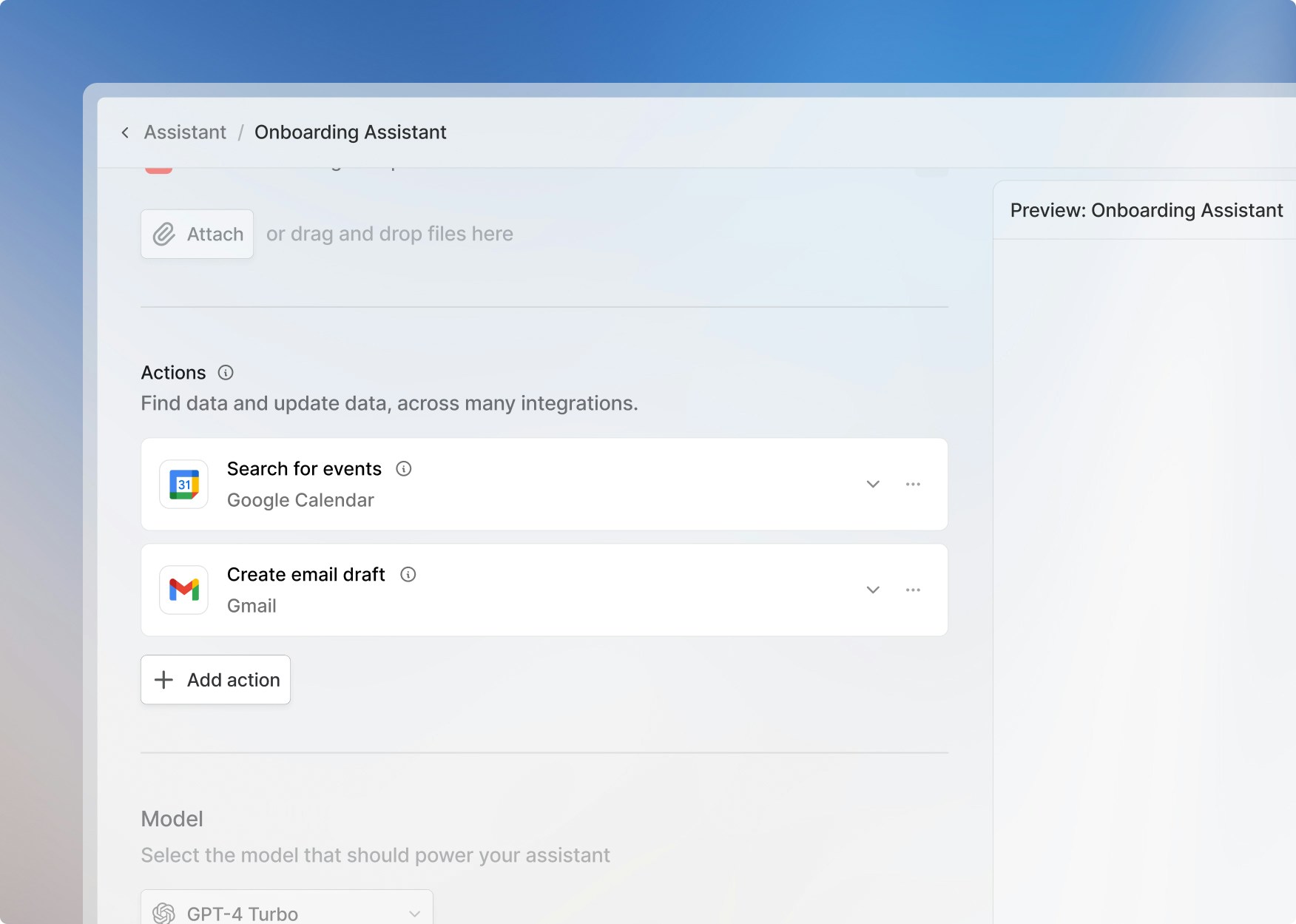
- Retrieve information from other systems
- Update, delete, or create entries in external tools
- Automate workflows across platforms
Learn more about setting up actions in our integrations guide.
Model Selection & Creativity
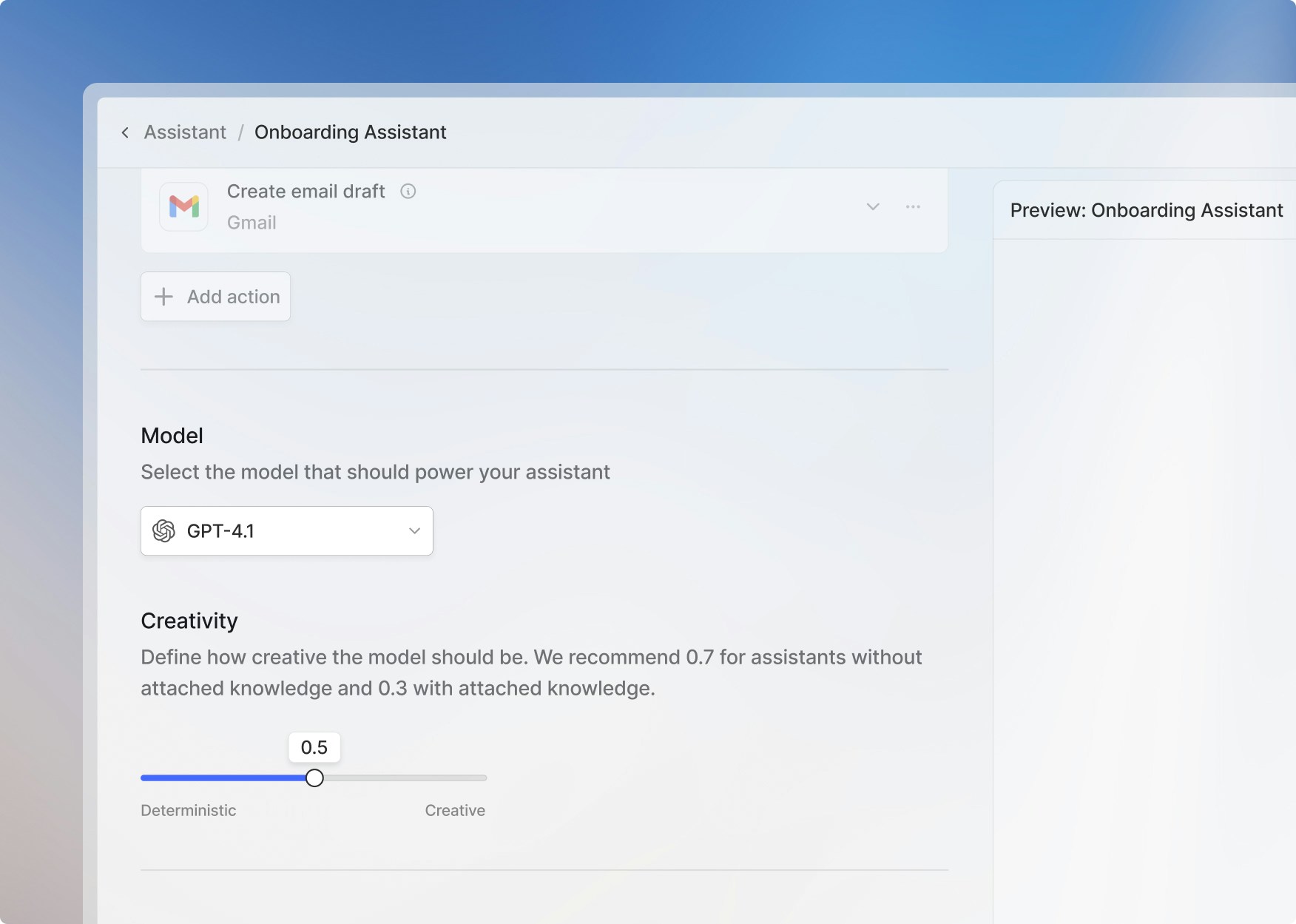
GPT-4.1 is currently the best model for most use cases, offering the optimal balance of capability and performance. See our model guide for detailed comparisons.
Creativity (Temperature)
Adjust the creativity level to control response variability:- Lower creativity: More focused, consistent responses
- Higher creativity: More varied, creative responses
Testing and Iteration
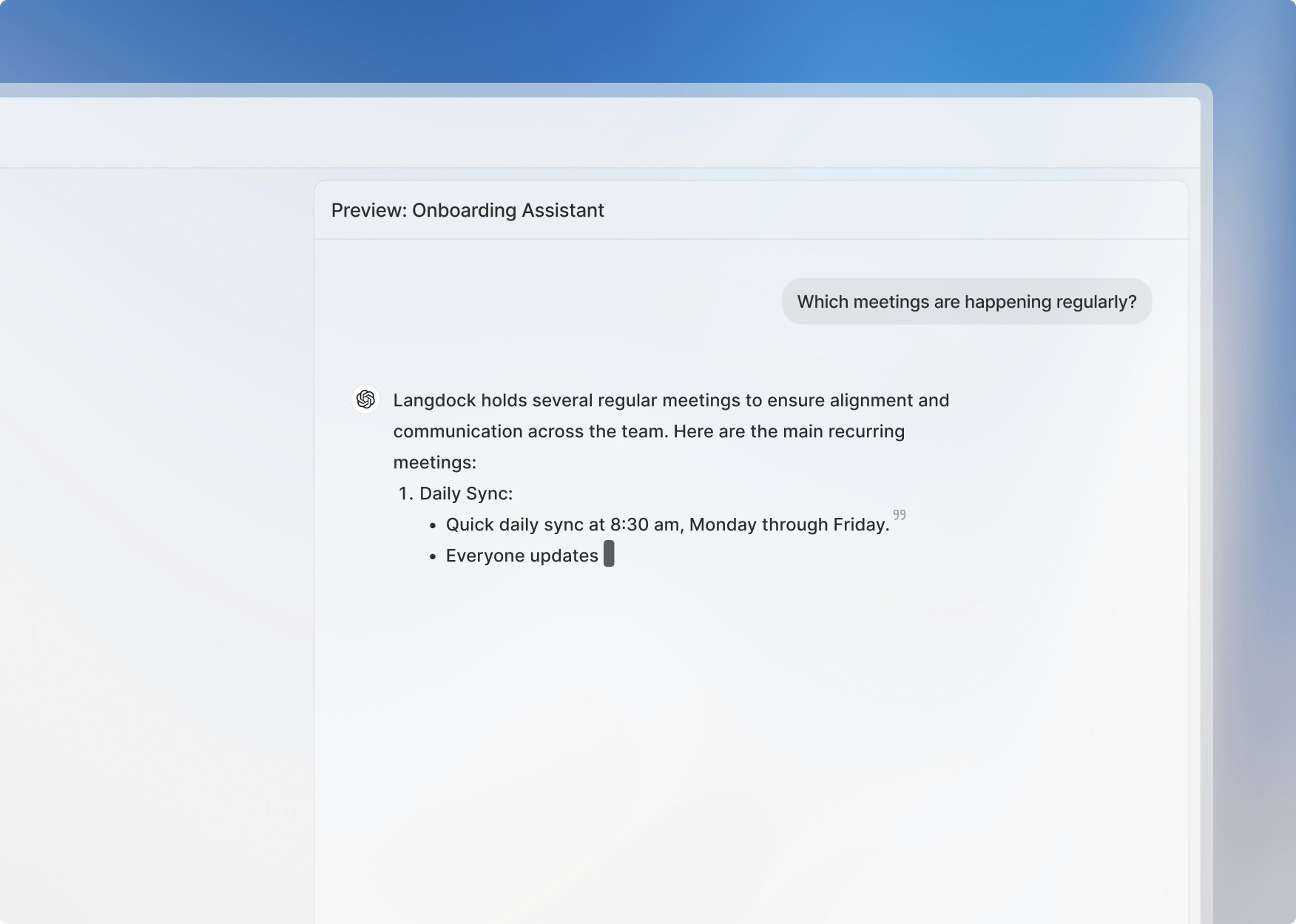
- Test different conversation flows
- Verify the assistant asks for missing information
- Ensure output format consistency
- Check response quality across various inputs
Sharing Your Assistant
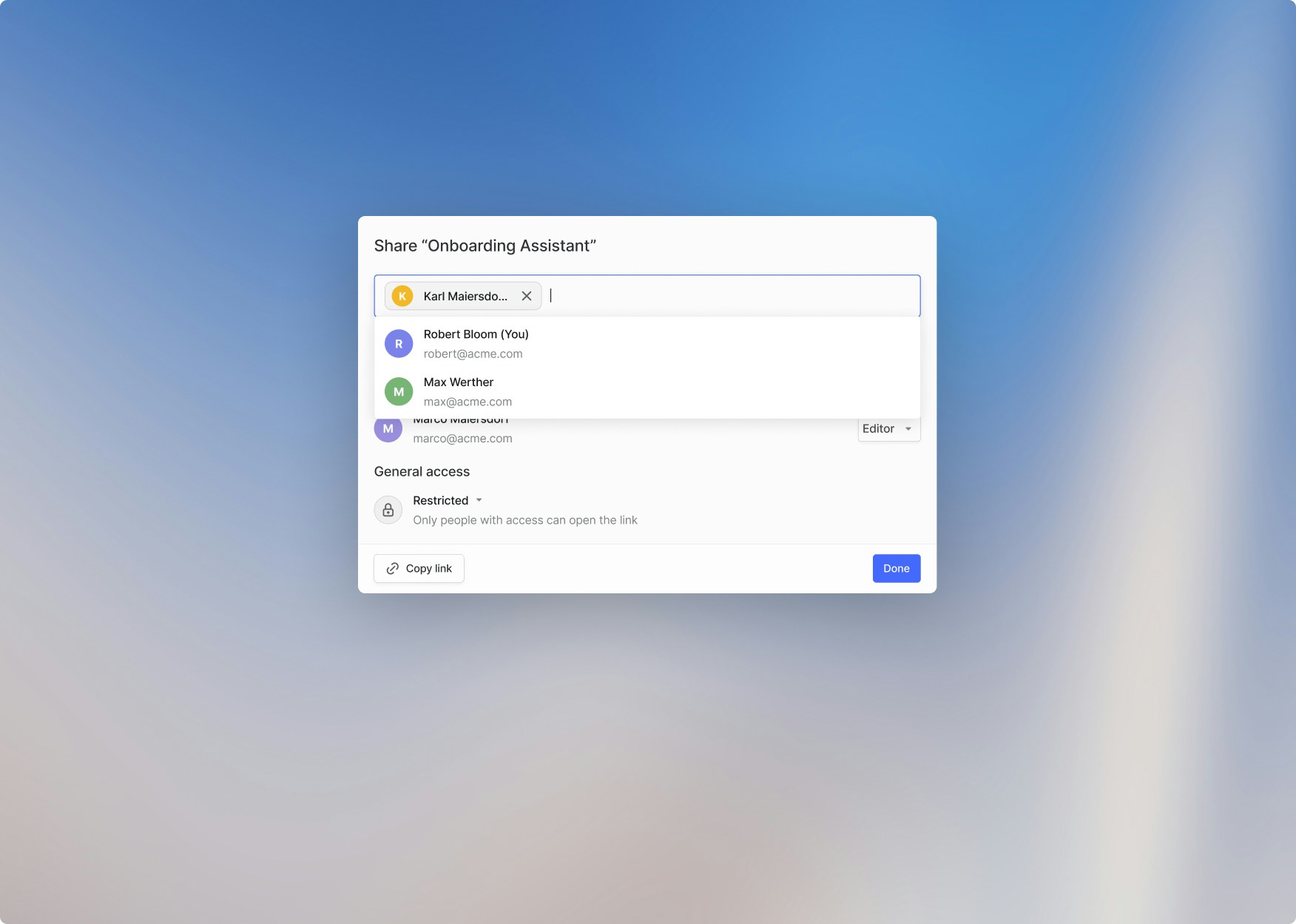
1
Share with Others
Click the Share button in the upper right corner to control access:Sharing options might be restricted in your workspace based on your admin’s security settings.
- Workspace
- Link Sharing
- Groups & Individuals
Share with your entire workspace for broad access.
2
Additional Options
Click the three dots next to the Share button to:
- Duplicate: Create a copy for experimentation
- Delete: Remove the assistant
- Usage Insights: View analytics and user feedback
Best Practices
Iterative Improvement
- Start Simple: Begin with basic functionality and add complexity gradually
- Test Extensively: Try various scenarios and edge cases
- Gather Feedback: Monitor usage insights and collect user feedback
- Refine Instructions: Update based on real-world usage patterns
Common Pitfalls to Avoid
Next Steps
Now that you’ve created your assistant, consider:- Setting up integrations to connect with your existing tools
- Creating prompt templates for common use cases